The ultimate guide to discount pricing strategies that win and retain customers
The first thing you see when you land on Temu’s discount-driven website is a bright red banner announcing 80% off. In all caps. Every single item has its price slashed—often by hundreds of pounds. The price of one mini projector is down to £57.77 from £229.99 and the price of a dual-camera drone has been cut by 77%.

Despite only launching in April 2023, Temu has taken off globally and more locally in the UK, with 89% of UK adults aware of the brand. It’s known for its huge discounts, mega-deals, and relentless promotions.
But its popularity doesn’t necessarily translate into sales—not from UK shoppers anyway. In fact, 78% of Britons haven’t bought from Temu this year (which just goes to show how much willpower we Brits have. If you make the mistake of giving Temu your email address, you can expect multiple emails per day announcing new discounts, “wins”, and promos).
Here’s the conundrum: we know that shoppers love a good deal. 84% of UK shoppers actively sought deals and sales before making a purchase over the past 12 months. But the data from Temu shows there can be too much of a good thing.
Ecommerce brands today have to find the tricky balance between using discounts to attract new customers and making sure they don’t tip over into “too much of a good thing”.
This is where it helps to have a strategy.
What is a discount marketing strategy?
A discount marketing strategy is something businesses use to attract customers and drive sales through price reductions. This strategy goes beyond simply slashing prices; it involves understanding customer behaviour, market trends, and the psychological factors that influence purchasing decisions.
At its core, a discount marketing strategy aims to create compelling offers that resonate with specific customer segments. For instance, brands can use discounts to reward loyal customers, entice new shoppers, or clear out seasonal inventory. The key is to make sure discounts are relevant and timed appropriately.
The benefits of using discount strategies
Discounts certainly have their time and place. They can be a great way to attract new customers and reward existing, loyal buyers.
Here are some other benefits you might have overlooked:
Compete with marketplaces
The online shopping scene is dominated by marketplaces like Amazon and Temu that use aggressive discounting tactics. To keep up, brands need to offer attractive deals that help them stand out from these giants.
Grow your subscribers
Offering discounts in exchange for shoppers’ email addresses helps grow your subscriber base. This also allows you to nurture leads through targeted marketing campaigns and warm them up ready for bigger promotions.
Clear inventory or an underperforming product group
If you have excess stock or underperforming products, running a targeted discount campaign can help move those items off the shelves. This can free up space for new inventory and minimise any potential losses from unsold goods.
A word of warning about discounting
There’s no doubt about it: humans love a deal. But it goes much deeper than that. There are actually three core psychological factors at play when we see a discount:
Psychological factor #1: anchoring
If a friend tells you they spent £500 on a pair of shoes, suddenly that £200 pair you’ve been eyeing doesn’t seem so bad. Customers tend to rely on other values they’re shown to evaluate a price point. So, if you set a higher initial price and scrub it out with a discounted rate, it can make the lower price seem more appealing.
Psychological factor #2: price framing
This is the art of making a price look “good”. For example, when a restaurant puts the most expensive dishes at the top of the menu, everything else looks cheap in comparison (even if it’s still eye-wateringly pricey). Simply presenting a price as a discount or sale can instantly make it more attractive, even if the actual price remains the same.
Psychological factor #3: loss aversion
Humans hate missing out on stuff more than we like getting new things. So, £10 saved is better than £10 gained, for example. When a shop says “Only 2 left!” or “sale ends in one hour!”, our brains go into panic mode. We don’t want to lose out on that deal, even if we didn’t want the thing in the first place.
When you look at marketplaces like Temu, this psychological “fear factor” is in play everywhere. And it can be overwhelming. Other brands think they need to match these deals to stay competitive, so they cut their prices at every corner.
However, while incentivising customers can feel like the right thing to do (and it comes with some quick wins like boosting your sales), it’s far more complex than simply deleting a few zeros.
Constantly running huge deals like Temu does comes with its fair share of negatives, like tighter margins, higher churn rates, lower customer lifetime value, and attracting less-than-ideal customers. It might seem like an easy way to increase sales, but at what cost?
We’re not saying you shouldn’t run discounts—far from it (remember, people love a deal!). But it pays to be strategic with what and how you discount. Deals should be used sparingly and align with what your customers want and expect from a brand like yours.
Case in point: they might expect huge savings and cheap products from Temu, but they probably aren’t expecting quality.
As we said before, there’s a fine balance between overdoing the discounts and using them in a way that attracts the right kind of shoppers and keeps them coming back.
Discount pricing strategies for every occasion
Seasonal promotions are the bread and butter for many brands—Black Friday, Christmas, and the January sales often bring in more revenue than the rest of the year combined, and that’s because holiday shoppers expect a deal. The whole point of Black Friday and Cyber Monday is to slash prices and sell more products.
Here’s how you can take advantage of these shopping pulse points without losing trust and credibility.
Black Friday and Cyber Monday
This duo is the heavyweight champion of sales events. It’s not just a day or two any more—we’re talking a whole month of money-saving madness. Smart brands are stretching out their Black Friday deals to cater to impulse shoppers and those who like to put a bit more thought into their purchases.

Projects Watches offer shoppers 60% off all products in its Black Friday sale.
Christmas Shopping
Capitalise on the lead-up to Christmas by sharing discounted stocking stuffers, big-ticket items, and gifts.
Gift guides are a great way to introduce shoppers to your product line, plus you can create bundle deals that hit multiple items on their Christmas list.
Discounts don’t have to be monetary either. Offering last-minute shipping promotions feeds into the need for cheap or free shipping at this time of year—38% of UK shoppers value free or discounted shipping at Christmas.
Tip: it’s hard to deliver personalised product recommendations at Christmas because shoppers aren’t usually shopping for themselves. But you can use previous browsing data to offer discounts on products they’ve looked at before (“treat yourself this Christmas… get 30% off this product you’ve had your eye on all year”).
Boxing Day and January Sales
When the Christmas hype is over, shoppers are ready to aggressively hunt down new year deals. We’re all just out here trying to shake off the turkey coma and treat ourselves.
Suggest products shoppers have shown an interest in before, offer personalised discounts based on each individual customer’s interests, and use this opportunity to clear out excess inventory (especially Christmas stock).
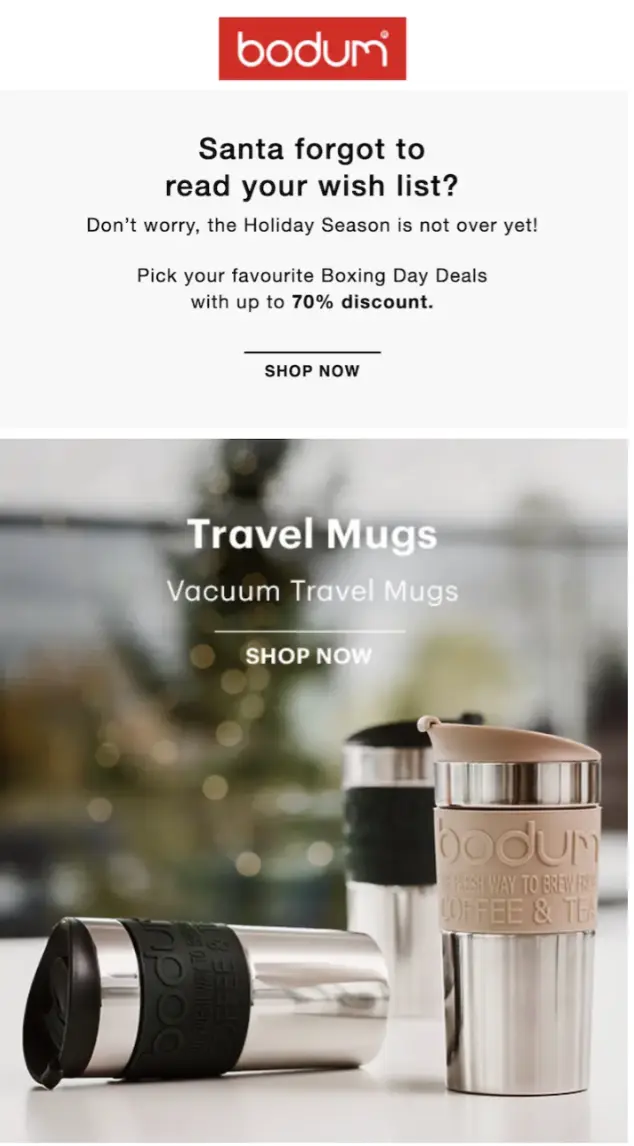
Bodum continues the Christmas shopping frenzy in its Boxing Day sale.
Spring and Summer Savings
The rest of the year is marked by smaller celebrations, like Mother’s Day, Father’s Day, Valentine’s Day, St Patrick’s Day, Easter, and the back-to-school rush. Use these opportunities to discount relevant products (“all things green are 40% less this St Paddy’s Day” or “get 20% off stationery in August”) and win new customers during key purchasing moments.
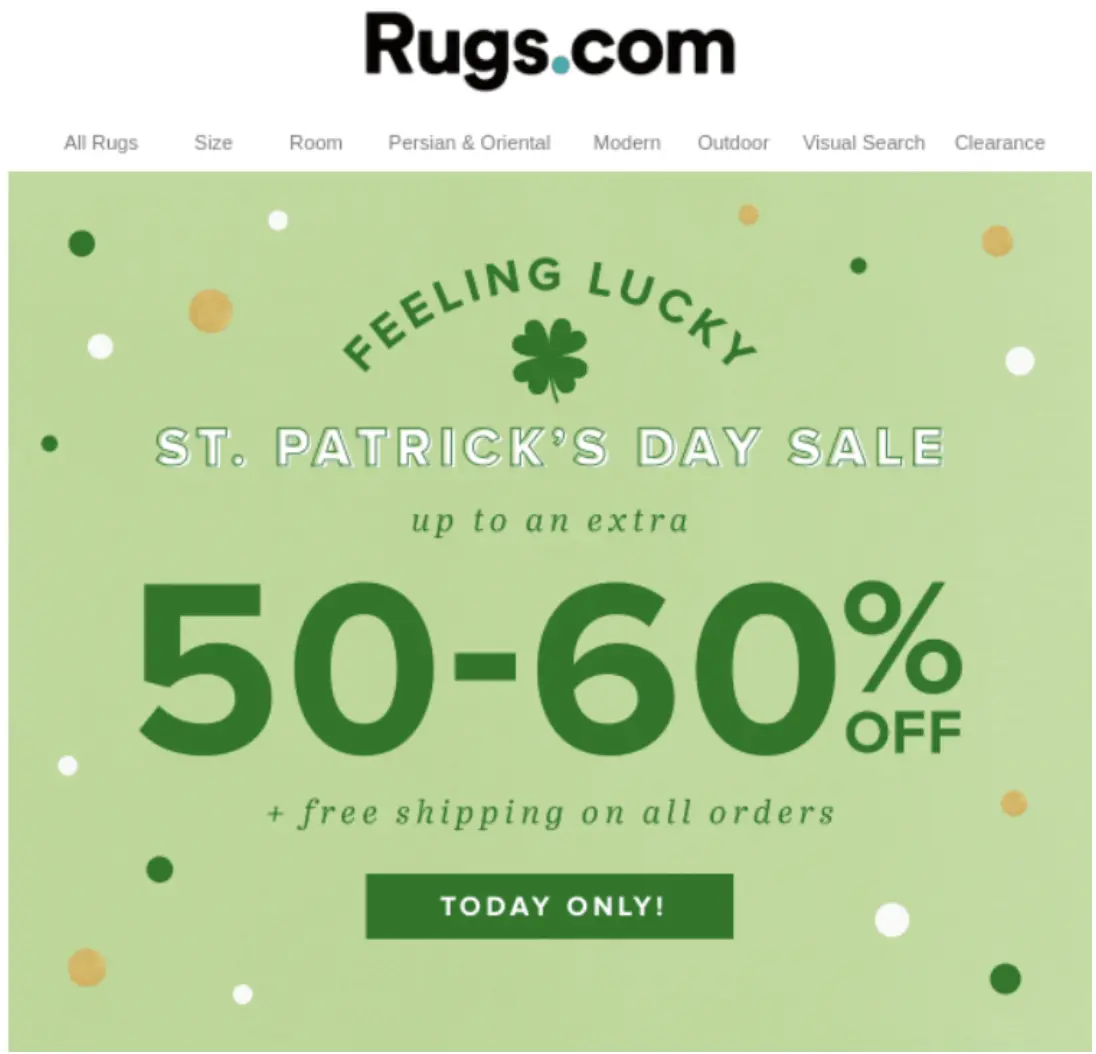
Rugs.com gives shoppers 50-60% off for one day only.
Discounting throughout the customer lifecycle
The unfortunate truth is that if you’re not offering some kind of deal at each stage of the customer lifecycle, there’s a competitor that will be.
Holding onto customers can feel like a very fragile exercise, but when you start sprinkling strategic promos throughout the customer journey, you add a little more trust and a little more loyalty each time.
Here are some moments you might want to discount:
- When someone joins your list. Lots of brands offer a 10% or 20% discount off the first purchase if a shopper signs up to the email list. It’s a great way to convince on-the-fence shoppers to buy and capture their email addresses so you can continue to nurture them.
- When someone makes a purchase. Reward new customers with additional discount codes they can use on their second or third purchase. Once a shopper has bought from you once, they’re more likely to do so again—adding an incentive speeds that up.
- When someone is loyal. Customers who buy from you again and again are the real MVPs here. Reward them with personalised discounts, whether it’s a percentage off your latest product line or a code they can share with a friend.
- When someone hasn’t bought from you in a while. Has a shopper gone dark on you? Win them back by sharing a limited-time discount code. Even better, map the discount code to a product they’ve shown interest in before.

The Couture Club offers shoppers 10% off their first order when they sign up to the brand’s email list.
Discounting based on customer profiles and behaviour
The problem with sites like Temu is they run sweeping discounts across every single product line. It’s almost impossible for shoppers to wade through the sheer number of products (there are literally hundreds of thousands) to find a deal that’s right for them.
Instead of using the spray and pray technique when it comes to discount pricing, take a more personal approach. Use previous shopper behaviour, purchases, and interests to inform which deals you share with each customer.
“Oh, you bought a tent last month? How about 15% off some fancy camping gear?”
Abandoned cart? We see you, and we’re not letting you go that easy. “Hey, you forgot something! Here’s a little discount to sweeten the deal.”
Here are some ideas:
- Previous purchases. Track what customers have bought in the past and share discounts based on those interests. Go one step further and offer discounted replenishments on consumables.
- Abandoned cart discounts. Give shoppers an added incentive to make it all the way to checkout by offering a discount on products they have in their basket.
- Birthday discounts. Show customers you care about them by offering discount codes on their birthdays.
- Customer anniversaries. Celebrate your loyal customers with discounts on the anniversary of their first purchase—or when they haven’t bought for a set period of time.

Days gives cart abandoners 10% off if they complete their order.
Discounting subscriptions
Subscriptions are the gift that keeps on giving. Customers are basically saying “I like you enough to let you charge my card every month.” But it’s a bigger ask—you need to get customers to commit to multiple purchases, not just a one-off buy.
This is where discounts can help:
- Offer a juicy discount for the first month or two (“50% off your first box!”).
- Give shoppers options. The more they pay, the more perks they get.
- Let customers skip a month or easily pause their subscription.
- Throw in occasional freebies or exclusive products.
- Offer referral bonuses if they get a friend to sign up.
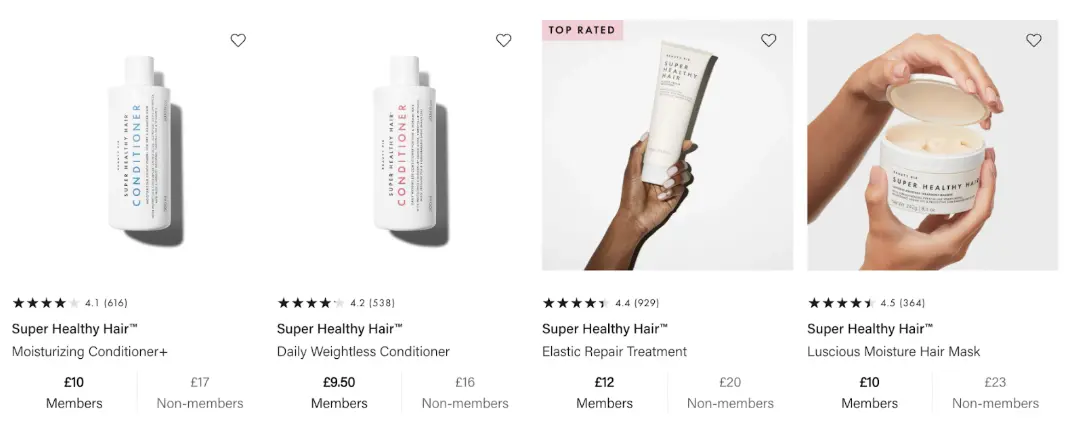
Beauty Pie has non-member and member prices for subscribers.
Discounting bulk purchases
While subscriptions are the ultimate recurring revenue generator, bulk purchases are the key to higher average order values (AOVs). “Buy more, save more” serves both you and your customers: they get to save more and you get more products off the shelves.
Here’s how you can encourage bulk purchases with a discount strategy:
- Tiered discounts. The classic “Buy 2, get 10% off. Buy 3, get 15% off. Buy 10, and we’ll throw in a free therapy session for your shopping addiction.”
- Bundle deals. Package complementary products together and offer a cut price when shoppers buy the lot of them in one go.
- Bulk-only products. Offer certain items or variants only in bulk. Exclusivity is sexy, even when it comes to buying 50 rolls of toilet paper.
- Group buying. Let customers team up to unlock bigger discounts.
- Seasonal bulk deals. Tap into that seasonal FOMO. Try “Stock up for winter!” or “Summer party pack!”.

Who Gives a Crap reduces the price of its bulk purchases.
Discounting early and quickly
There doesn’t have to be a specific reason for a discount. It doesn’t have to be Valentine’s Day, a shopper’s birthday, or because they’ve left something in their cart. It can simply be because you want to boost your sales or because you want to treat your customers and get valuable feedback at the same time.
Let’s take a look at what this might look like in action:
- Flash sales. These are limited-time deals (often with very steep discounts) that attract new customers. They tend to run for a day or so and can be a great way to give your bottom line a nice little bump.
- Early bird discounts. Offer exclusive access (and discounts) to shoppers who buy your latest products first. This can be a solid strategy for collecting reviews and rewarding customers who invest early.
- Excess stock sales. Got a few products lingering in your warehouse? Run a quick sale to shift them.

Barebones runs a 50% off flash sale.
Tip: warm up subscribers before you discount
At its core, discounting is a tactic to get customers to buy from you—and, like with any sales tactic, it works better if shoppers trust you.
This is where it pays to warm up subscribers before you hit them with a discount, particularly if you’re planning a bulk discount to align with an upcoming holiday or sale (Black Friday, we’re looking at you).
Use nurturing techniques to warm up potential shoppers so that when you announce a discount, they’re already waiting with their wallets out.
Here are some suggestions:
- Personalised welcome series. Use automated email flows to create a tailored welcome series for new subscribers. Start by introducing your brand story and values, showcase your best-selling products, and share customer testimonials.
- Educational content. Segment your audience and send targeted content based on their interests or browsing behaviour. E.g. skincare brands can send tips on developing a new routine or explanations of key ingredients.
- User-generated content. Add customer photos and reviews to your email nurturing campaigns for added social proof—people are more likely to trust a brand that has a slew of happy customers.
- Product highlights. Use a product recommendation engine to showcase relevant products based on each subscriber’s browsing and purchase history.
4 tactical examples of UK brands doing discounts right
Want to see what a good discount strategy looks like in action? Take a leaf out of these brands’ books.
1. How London Sock Co. “paired” price drops with philanthropy
London Sock Co., a premium sock brand, successfully navigated the chaotic Black Friday season without compromising its brand integrity.

It offered a unique promotion combining a 10% discount with a charitable donation of two pairs of socks for every purchase. This strategy resonated strongly with their audience, resulting in customers purchasing an average of 4.5 products during Black Friday, more than double the industry standard.
The company’s approach led to a remarkable 180% increase in average order value and a 142% growth in revenue during the Black Friday period.
2. How Wilkinson Sword uses personalised discounts
Razor brand Wilkinson Sword uses a sign-up form to collect first-party data from customers, including what kind of products they’re interested in and demographic information.
It then uses these details to deliver highly personalised discounts. Subscribers all get 20% off their first order, but the brand strategically shares products they’re most likely to be interested in to increase the chances of a purchase.

This tactic has led to a 39% purchase rate for its email welcome series.
3. How Club L converts high-value carts with discounts
Club L London has really nailed its abandoned cart strategy, and it’s paying off big time. The clothing brand has fine-tuned its approach through extensive A/B testing, making it Club L’s top revenue-generating flow. For big-ticket carts, they dangle a juicy, time-sensitive offer to seal the deal.
The first email in the flow is triggered within an hour while the iconic styles are still top of mind, and converts nearly 11%. A second reminder sent the next day converts a further 7%.
4. How The Couture Club won Black Friday with exclusive discounts
The Couture Club got creative on Black Friday and locked down its website, only giving the password to loyalty members for early access. These super-fans could get a hefty discount if they purchased before doors opened to the general public.

This move paid off big time, with their email revenue skyrocketing 325% during Black Friday.
The key to successful discount pricing: scale and automate, don’t batch and blast
While everyone loves a discount, not everyone loves the same discount—something that Temu doesn’t seem to factor in.
Yes, discount pricing strategies like tactically using digital coupons, rewarding loyal customers, and running flash sales are key ways you can compete, win, and retain business. But dispensing discount codes willy-nilly is foolish and, if they’re irrelevant to the shopper, just serve to drive unsubscribes (“Why do you keep pushing me with 40% off garden umbrellas when I live in a flat!”).
Instead of “batching and blasting” discounts a la Temu, it’s better to use Klaviyo’s customer-focused features and create highly personalised offers for each individual shopper at exactly the right moment.
Why a personalised discount strategy wins every time
Personalised discounts based on customer data and behaviour are far more effective than generic, mass-distributed offers. They show customers you understand their needs and value their business.
Ultimately, this leads to higher conversion rates and long-term, loyal customers.
Here’s why.
- More relevant deals. A customer who frequently browses running shoes is more likely to appreciate and act on a discount for athletic wear than a random sale on kitchenware.
- Better profit margins. Automating your discount strategy lets you offer the minimum discount necessary to trigger a purchase based on a shopper’s previous buying behaviour.
- Better customer experience. Personalised discounts make customers feel special. This is a pre-requisite for brand loyalty and (hopefully) word-of-mouth recommendations.
How to scale and automate your discount pricing strategy
Klaviyo is the only ecosystem you need to create a sophisticated, automated discount strategy. Here’s how you can use its features to build thoughtful, relevant deals on a customer level.
Segment your audience
Use Klaviyo’s advanced segmentation capabilities to group customers based on things like their purchase history, browsing behaviour, and engagement levels.
For example, you might create segments for VIP customers who deserve premium offers, first-time buyers who need an extra push, or cart abandoners who might convert with a small incentive.
Set up triggered flows
Create automated email sequences that send personalised discounts based on specific customer actions or milestones.
This might be a welcome series offering a small discount to new subscribers, a win-back flow with escalating offers for inactive customers, or a post-purchase flow with related product discounts.
Take advantage of predictive analytics
Use Klaviyo’s AI-powered predictive analytics to identify when a customer is likely to make their next purchase. You can use this granular data to time your discount offers so they reach customers at the most impactful moment.
A/B test your discount strategy
It takes time to develop a discount strategy that works how you want it to, which is why it’s important to continuously refine it by testing different offer types.
Trial discounts of varying percentages, experiment with when you approach shoppers with a deal, and play around with who you run promos for. Then, use Klaviyo’s analytics to see which approaches drive the best results for each customer segment.
Let AI do some of the heavy lifting
Trying to create multiple discounts for multiple customer segments involves a lot of moving parts.
Instead of trying to do it all yourself, Klaviyo’s AI can take some of the pressure off. As well as identifying shoppers that are partial to a deal or two, AI can use detailed customer data to deliver optimised discounts to individual customers as and when they take certain actions or match specific criteria.
Beyond the bargain bonanza: crafting discounts that actually matter
Discount pricing is a bit like the Wild West. While the allure of massive discounts can be tempting—as seen with Temu—the risks of alienating customers with irrelevant offers can outweigh the benefits.
By using Klaviyo’s powerful tools for segmentation, automation, and marketing analytics, you can create personalised discount strategies that actually resonate with shoppers on a personal level. It’s no surprise that this improves the customer experience which, in turn, leads to more sustainable sales growth.
Ultimately, a thoughtful discount strategy—one that’s rooted in understanding your customers’ needs—will lead to more meaningful engagements and long-term success against incredibly competitive marketplaces.

Related content

Acquisition is harder and ads cost more—so how do smart brands keep growing? Learn how customer value optimisation (CVO) helps you turn first-time buyers into loyal, high-value customers.
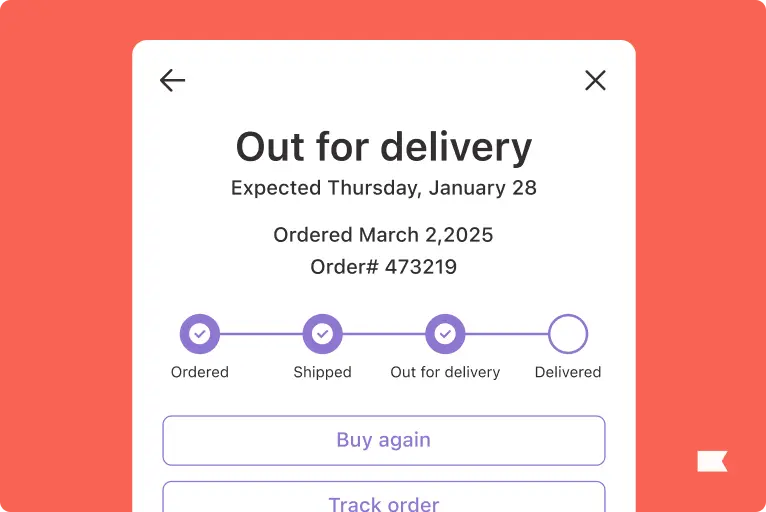
With rising acquisition costs, customer retention is more crucial than ever. Discover 8 strategies from Klaviyo to boost ROI and keep customers loyal.
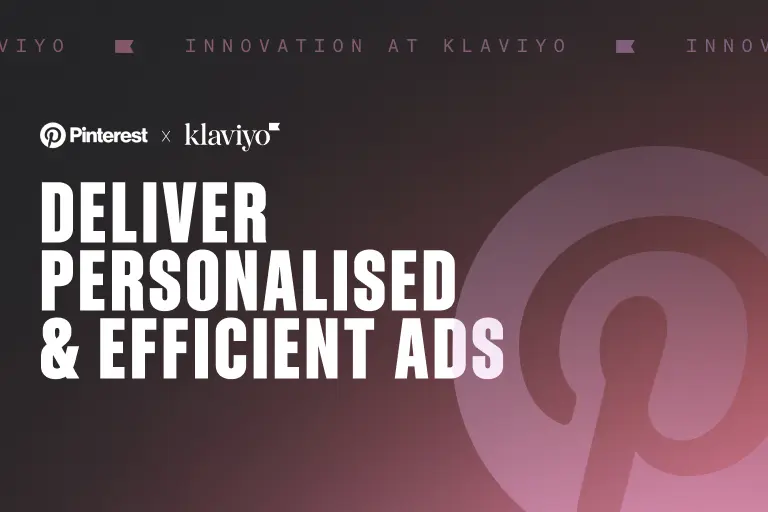
Integrate Pinterest with the Klaviyo platform to seamlessly create personalised Pinterest ad campaigns and leverage first-party data in Klaviyo for greater return on ad spend.